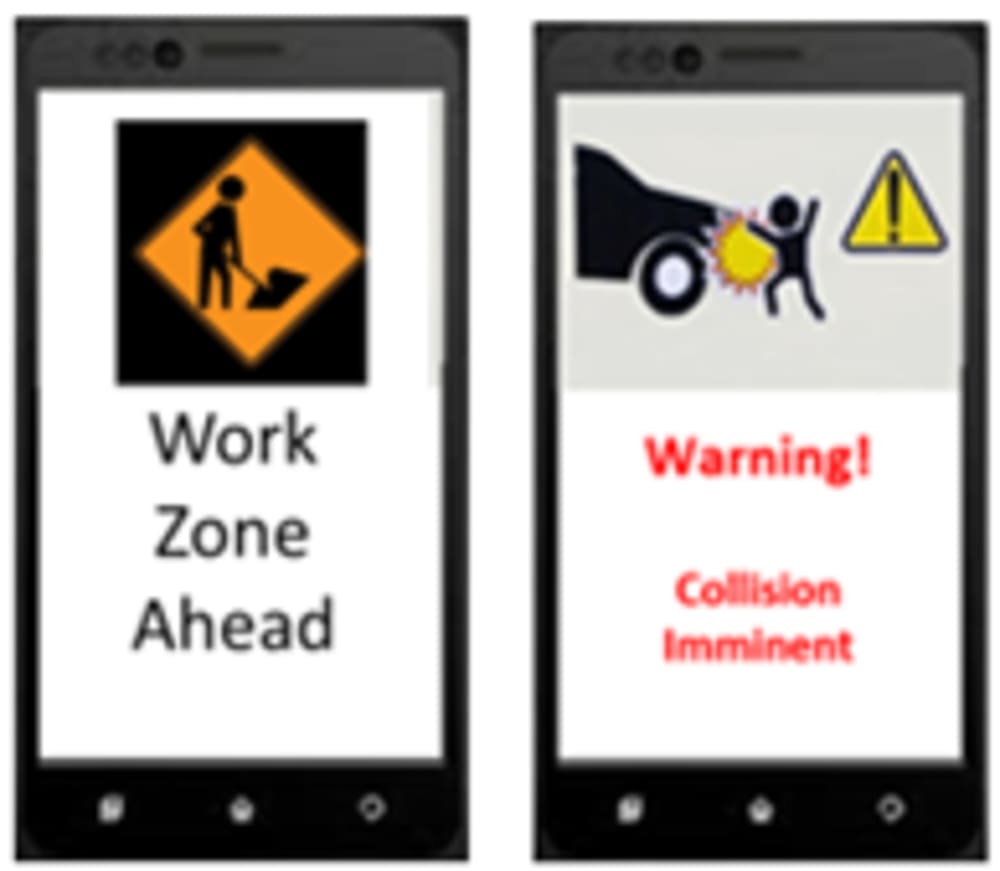Each year, more than 20,000 injuries and over 100 fatalities occur at road construction zones. Nearly two-thirds (62%) of these incidents involve a worker being struck by a construction vehicle. Furthermore, 76% of work-zone occupational fatalities occur because of conflict with moving equipment/vehicles, with 14% attributed to strike by highway vehicles. A novel wearable safety system to mitigate work-site crashes offers the advantage of using an adopted wireless communication system standard that will soon be ubiquitous on U.S. roads (dedicated short range communications, DSRC). Cellular communication may also be used if the signal latency is sufficiently low to enable the timely exchange of wireless data. This will be achieved through the use of personal digital devices (e.g., smart phones) as a key element of the system.
Research has shown that a high percentage of work zone vehicle–worker collisions occur under continual traffic flow due to the lack of infrastructure protections (e.g., barriers), especially in undefined work areas. The proposed innovation entails the development of an “intelligent” safety system that provides advanced warning to work zone and other highway workers along with vehicle/equipment operators to prevent collisions and related injuries. This will be accomplished through the development of a wearable human–machine interface (HMI) system that enhances the onsite safety of road workers and vehicle/equipment operators. Therefore, the development of a more effective and reliable worker-sensing safety system that can accurately detect an impending vehicle–worker conflict has the potential to significantly improve worksite safety.
Current practice relies on the utilization of active and passive measures to reduce vehicle and pedestrian incidents. While these approaches are helpful, their effectiveness is limited by roadway occlusions such as trees, cars, and adverse weather, which restrict the visible range and make it difficult for laser- and radar-based systems to distinguish between pedestrians and other roadway objects. The proposed system will utilize dedicated short-range communications (DSRC) systems mounted on vehicles and worn by roadway personnel to alert workers and vehicle operators of impending struck-by incidents. This strategy is expected to provide enhanced information exchange between workers and vehicles (both traffic and construction vehicles). The DSRC technology will be embedded within the workers’ apparel to determine the presence, location, and trajectories of workers and respective strike threats. Although cellular and Bluetooth communications will be targeted for application in this project (Figure 1 warning), human-machine interfaces (HMIs) will be developed to be communication-agnostic, to the extent possible (Figure 2). This will enable their ready transition for use in areas with DSRC coverage. In the configuration shown in Figure 2, the cell phone may be used independently or linked to a built-in interface to improve timely warnings.
The proposed system is designed to best provide contextual warnings to workers in busy and noisy construction environments under varying ambient conditions. As worker–driver interactions are not specifically addressed in current worksite safety practice, alerting both workers and drivers of imminent collisions is of paramount importance.
Like this entry?
-
About the Entrant
- Name:Cristian Druta
- Type of entry:individual
- Patent status:none





